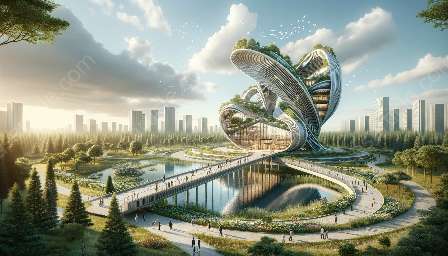Air transportation has revolutionized global connectivity and economic progress, but the environmental impact of this industry cannot be overlooked. In response to growing concerns about climate change and pollution, the concept of sustainable air transportation has gained traction, sparking innovations and heightened awareness of environmental stewardship within the field of aerospace engineering. This article explores the advancements, challenges, and future prospects of sustainable air transportation and its compatibility with aerospace engineering and engineering as a whole.
Advancements in Sustainable Air Transportation
Advancements in sustainable air transportation encompass multifaceted approaches that aim to minimize environmental impact without compromising the efficiency and safety of air travel. One prominent initiative is the development and integration of alternative aviation fuels, such as biofuels and hydrogen, which emit fewer greenhouse gases compared to traditional jet fuels. Additionally, advancements in aircraft design and propulsion systems have led to more fuel-efficient and aerodynamically optimized aircraft, resulting in reduced emissions and energy consumption.
Beyond the aircraft themselves, the implementation of sustainable practices in airport operations, air traffic management, and ground transportation further contributes to the overall sustainability of air transportation. These include the utilization of renewable energy sources to power airport facilities, streamlined air traffic routes for fuel savings, and the promotion of public transit options to and from airports to reduce carbon emissions.
Challenges in Achieving Sustainable Air Transportation
While significant progress has been made, several challenges persist in the pursuit of sustainable air transportation. The scalability and cost-effectiveness of alternative aviation fuels remain key barriers to widespread adoption, as large-scale production and distribution infrastructure are essential for their viability. Furthermore, the integration of new technologies and operational practices requires stringent regulatory and certification processes to ensure safety and reliability, adding complexity to the implementation of sustainable solutions.
Addressing the environmental impact of legacy aircraft and infrastructure also presents a challenge, as modernizing and retrofitting existing fleets and facilities to meet sustainability standards entail substantial investments and engineering complexities. Additionally, coordinating global efforts and policies to achieve harmonized sustainability goals across diverse air transportation ecosystems poses a significant challenge, given the varying regulatory frameworks and infrastructure capabilities worldwide.
Future Prospects and Innovations
Despite the challenges, the future of sustainable air transportation holds promising innovations and opportunities that are aligned with the principles of aerospace engineering and broader engineering disciplines. Ongoing research and development efforts continue to focus on advancing electric and hybrid propulsion systems for aircraft, offering the potential for significant reductions in carbon emissions and noise pollution. Furthermore, the concept of urban air mobility and autonomous electric aircraft presents a vision of sustainable, low-impact aerial transportation within urban environments, stimulating interdisciplinary collaborations within aerospace engineering and urban planning.
Advancements in materials science and manufacturing technologies are driving the development of lightweight, high-strength composite materials for aircraft construction, contributing to improved fuel efficiency and reduced environmental footprint. Moreover, the convergence of data analytics, artificial intelligence, and smart aviation systems facilitates precise flight path optimization and predictive maintenance, further enhancing the eco-efficiency of air transportation.
Impacts on Aerospace Engineering and Engineering
The pursuit of sustainable air transportation significantly influences the field of aerospace engineering, prompting engineers and researchers to integrate environmental considerations and sustainable practices into the design, operation, and maintenance of aircraft and related systems. This shift necessitates a holistic approach to technological innovation, encompassing aerodynamics, materials science, propulsion, and systems engineering to optimize the environmental performance of air transportation.
Within the broader field of engineering, the advancements in sustainable air transportation serve as a catalyst for interdisciplinary collaboration and knowledge exchange among various engineering disciplines. Environmental engineering, mechanical engineering, and electrical engineering converge with aerospace engineering to develop and implement sustainable solutions, underscoring the interconnectedness of engineering domains in addressing complex societal and environmental challenges.
Conclusion
Sustainable air transportation represents a harmonious convergence of aerospace engineering and environmental stewardship, epitomizing the imperative for technological progress to coexist with environmental preservation. As the aviation industry continues to embrace sustainable practices and innovations, the compatibility with engineering disciplines is increasingly evident, fostering a transformative paradigm that prioritizes the well-being of the planet and future generations.

